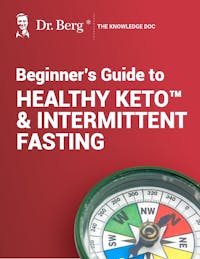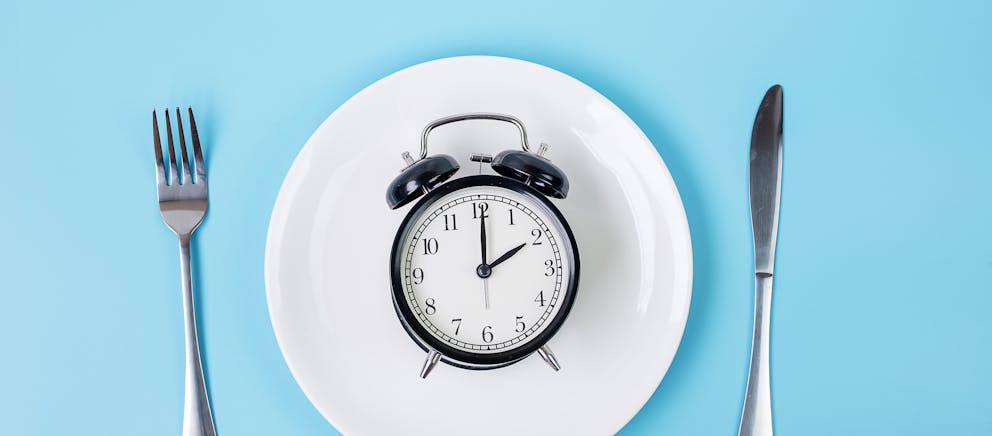48-Hour Fasting: Benefits, Tips, and Beginner’s Guide

How Does Intermittent Fasting Work?
Understand the science behind intermittent fasting and its health benefits
Learn how fasting impacts metabolism, insulin sensitivity, and hormonal balance
Discover the four stages of intermittent fasting
Get practical tips for integrating fasting into your daily routine

How Does Intermittent Fasting Work?
Understand the science behind intermittent fasting and its health benefits
Learn how fasting impacts metabolism, insulin sensitivity, and hormonal balance
Discover the four stages of intermittent fasting
Get practical tips for integrating fasting into your daily routine

How Does Intermittent Fasting Work?
Understand the science behind intermittent fasting and its health benefits
Learn how fasting impacts metabolism, insulin sensitivity, and hormonal balance
Discover the four stages of intermittent fasting
Get practical tips for integrating fasting into your daily routine

How Does Intermittent Fasting Work?
Understand the science behind intermittent fasting and its health benefits
Learn how fasting impacts metabolism, insulin sensitivity, and hormonal balance
Discover the four stages of intermittent fasting
Get practical tips for integrating fasting into your daily routine

How Does Intermittent Fasting Work?
Understand the science behind intermittent fasting and its health benefits
Learn how fasting impacts metabolism, insulin sensitivity, and hormonal balance
Discover the four stages of intermittent fasting
Get practical tips for integrating fasting into your daily routine

How Does Intermittent Fasting Work?
Understand the science behind intermittent fasting and its health benefits
Learn how fasting impacts metabolism, insulin sensitivity, and hormonal balance
Discover the four stages of intermittent fasting
Get practical tips for integrating fasting into your daily routine

How Does Intermittent Fasting Work?
Understand the science behind intermittent fasting and its health benefits
Learn how fasting impacts metabolism, insulin sensitivity, and hormonal balance
Discover the four stages of intermittent fasting
Get practical tips for integrating fasting into your daily routine

How Does Intermittent Fasting Work?
Understand the science behind intermittent fasting and its health benefits
Learn how fasting impacts metabolism, insulin sensitivity, and hormonal balance
Discover the four stages of intermittent fasting
Get practical tips for integrating fasting into your daily routine

How Does Intermittent Fasting Work?
Understand the science behind intermittent fasting and its health benefits
Learn how fasting impacts metabolism, insulin sensitivity, and hormonal balance
Discover the four stages of intermittent fasting
Get practical tips for integrating fasting into your daily routine

How Does Intermittent Fasting Work?
Understand the science behind intermittent fasting and its health benefits
Learn how fasting impacts metabolism, insulin sensitivity, and hormonal balance
Discover the four stages of intermittent fasting
Get practical tips for integrating fasting into your daily routine

How Does Intermittent Fasting Work?
Understand the science behind intermittent fasting and its health benefits
Learn how fasting impacts metabolism, insulin sensitivity, and hormonal balance
Discover the four stages of intermittent fasting
Get practical tips for integrating fasting into your daily routine

How Does Intermittent Fasting Work?
Understand the science behind intermittent fasting and its health benefits
Learn how fasting impacts metabolism, insulin sensitivity, and hormonal balance
Discover the four stages of intermittent fasting
Get practical tips for integrating fasting into your daily routine

Beginner’s Guide to Healthy Keto & Intermittent Fasting
Receive a step-by-step guide to starting Healthy Keto® and intermittent fasting
Learn about foundational principles and best practices for beginners
Get detailed visual guidance on portion sizes and meal composition
Discover how to set achievable goals and monitor your progress
Find practical tips for overcoming common challenges and staying motivated

Beginner’s Guide to Healthy Keto & Intermittent Fasting
Receive a step-by-step guide to starting Healthy Keto® and intermittent fasting
Learn about foundational principles and best practices for beginners
Get detailed visual guidance on portion sizes and meal composition
Discover how to set achievable goals and monitor your progress
Find practical tips for overcoming common challenges and staying motivated

Beginner’s Guide to Healthy Keto & Intermittent Fasting
Receive a step-by-step guide to starting Healthy Keto® and intermittent fasting
Learn about foundational principles and best practices for beginners
Get detailed visual guidance on portion sizes and meal composition
Discover how to set achievable goals and monitor your progress
Find practical tips for overcoming common challenges and staying motivated

Beginner’s Guide to Healthy Keto & Intermittent Fasting
Receive a step-by-step guide to starting Healthy Keto® and intermittent fasting
Learn about foundational principles and best practices for beginners
Get detailed visual guidance on portion sizes and meal composition
Discover how to set achievable goals and monitor your progress
Find practical tips for overcoming common challenges and staying motivated

Beginner’s Guide to Healthy Keto & Intermittent Fasting
Receive a step-by-step guide to starting Healthy Keto® and intermittent fasting
Learn about foundational principles and best practices for beginners
Get detailed visual guidance on portion sizes and meal composition
Discover how to set achievable goals and monitor your progress
Find practical tips for overcoming common challenges and staying motivated

Beginner’s Guide to Healthy Keto & Intermittent Fasting
Receive a step-by-step guide to starting Healthy Keto® and intermittent fasting
Learn about foundational principles and best practices for beginners
Get detailed visual guidance on portion sizes and meal composition
Discover how to set achievable goals and monitor your progress
Find practical tips for overcoming common challenges and staying motivated

Beginner’s Guide to Healthy Keto & Intermittent Fasting
Receive a step-by-step guide to starting Healthy Keto® and intermittent fasting
Learn about foundational principles and best practices for beginners
Get detailed visual guidance on portion sizes and meal composition
Discover how to set achievable goals and monitor your progress
Find practical tips for overcoming common challenges and staying motivated

Beginner’s Guide to Healthy Keto & Intermittent Fasting
Receive a step-by-step guide to starting Healthy Keto® and intermittent fasting
Learn about foundational principles and best practices for beginners
Get detailed visual guidance on portion sizes and meal composition
Discover how to set achievable goals and monitor your progress
Find practical tips for overcoming common challenges and staying motivated

Beginner’s Guide to Healthy Keto & Intermittent Fasting
Receive a step-by-step guide to starting Healthy Keto® and intermittent fasting
Learn about foundational principles and best practices for beginners
Get detailed visual guidance on portion sizes and meal composition
Discover how to set achievable goals and monitor your progress
Find practical tips for overcoming common challenges and staying motivated

Beginner’s Guide to Healthy Keto & Intermittent Fasting
Receive a step-by-step guide to starting Healthy Keto® and intermittent fasting
Learn about foundational principles and best practices for beginners
Get detailed visual guidance on portion sizes and meal composition
Discover how to set achievable goals and monitor your progress
Find practical tips for overcoming common challenges and staying motivated

Beginner’s Guide to Healthy Keto & Intermittent Fasting
Receive a step-by-step guide to starting Healthy Keto® and intermittent fasting
Learn about foundational principles and best practices for beginners
Get detailed visual guidance on portion sizes and meal composition
Discover how to set achievable goals and monitor your progress
Find practical tips for overcoming common challenges and staying motivated

Beginner’s Guide to Healthy Keto & Intermittent Fasting
Receive a step-by-step guide to starting Healthy Keto® and intermittent fasting
Learn about foundational principles and best practices for beginners
Get detailed visual guidance on portion sizes and meal composition
Discover how to set achievable goals and monitor your progress
Find practical tips for overcoming common challenges and staying motivated
A 48-hour fast is a popular form of intermittent fasting that offers considerable health benefits.
Extended periods of calorie restriction help boost weight loss, trigger metabolic changes linked to improved insulin sensitivity, support healthy blood pressure, and profoundly impact cellular regeneration and energy production.
Learn how you can get started with prolonged fasting and what steps you can take to minimize the potential side effects of restricting your calorie intake for 48 hours.

What is 48-hour fasting?
Intermittent fasting is a mealtime schedule that alternates between fasting periods and eating periods.
The 16:8 intermittent fast—16 hours of fasting followed by an eight-hour eating period—is one of the most popular fasting patterns and is a perfect addition to a keto lifestyle.
However, if you can tolerate more extended fasting periods, regularly doing a 48-hour fast may be an even better choice.
As the name implies, 48-hour fasting requires caloric restriction for two days. While fasting, it’s necessary to abstain from all foods and only drink zero-calorie fluids such as water or herbal teas.
Prolonged fasting triggers significant metabolic changes and pushes your metabolism to convert stored body fat into energy. As your body breaks down fats, the liver generates ketones, a metabolic by-product of fat-burning and a very efficient energy source.
When your cells use ketones as fuel, you enter a metabolic state known as ketosis. Ketosis doesn’t just support weight loss but has profound benefits for cellular health.
While some people do 48-hour fasting once a week, others may opt for a two-day fast once a month or whenever needed.
Watch the video below to discover the amazing benefits of prolonged fasting.
Six benefits of 48-hour fasting
Fasting induces significant metabolic changes and triggers a number of hormonal changes that support cellular health and lower the risk of chronic diseases, including diabetes, insulin resistance, and metabolic syndrome.
Research published in Nutrients states, ”Prolonged fasting is a potential treatment for insulin resistance and cardiometabolic dysfunction as it reduces weight and improves other cardiometabolic markers without the use of pharmaceuticals or surgery.”
Here are six reasons why you should start 48-hour fasting.
1. Stimulates brain cell regeneration
Prolonged fasting positively affects brain cells and increases the growth of new nerve cells—a process known as neurogenesis.
Fasting stimulates the production of brain-derived neurotrophic factor (BDNF), a protein responsible for the growth and survival of neurons.
Fasting has also been shown to reduce inflammation in the brain and lowers the risk of neurodegenerative diseases such as Alzheimer's and Parkinson's disease.
2. Promotes weight loss
Fasting promotes weight loss as the body is forced to utilize stored body fat as an energy source. The longer the fast, the more body fat is burned to sustain calorie restriction.
How much weight you can lose during a two-day fast depends on your metabolic health, activity levels, and diet. However, most people lose between four to six pounds during a 48-hour fast.

3. Triggers autophagy
Fasting triggers autophagy, a cellular process that breaks down and recycles damaged or dysfunctional cell components, such as proteins, organelles, and other cellular debris.
A study published in Aging Research Reviews explains that autophagy stimulates cellular renewal and regeneration, linked to healthy aging and other health benefits, such as improved insulin sensitivity and lower inflammation, and may potentially reduce the risk of developing cancer.
4. Increased energy
Fasting has been shown to increase the number of mitochondria, which are the cellular components responsible for producing energy.
The metabolic changes during fasting stimulate the production of new mitochondria and improve the function of existing ones. This has been linked to several health benefits, including improved metabolism, increased energy, and decreased risk of chronic diseases such as diabetes, cancer, and neurodegenerative disorders.
5. Improves digestive function
During fasting, your digestive system can rest, which helps to improve digestion.
“Fasting allows the lining in your small intestines, the main site of nutrient absorption, to regenerate,” explains Dr. Berg. “This increases nutrient absorption, lowers inflammation, and strengthens immune defenses in your gut.”
6. Lowers inflammation
Extended fasting has powerful anti-inflammatory effects and may lower the risk of inflammatory diseases, including diabetes, heart disease, and cancer.
Fasting triggers hormonal changes that lead to lower production of pro-inflammatory compounds and, at the same time, stimulates the secretion of anti-inflammatory molecules by immune cells, which helps to dampen immune reactions and lowers inflammation.

Potential downsides of fasting
While fasting has impressive health benefits, it can also have downsides. Fasting triggers significant changes in hormone and electrolyte levels, which can, in some people, cause adverse health effects.
Breastfeeding and pregnant women and those who are trying to gain weight should avoid 48-hour fasting.
In addition, it’s essential to discuss prolonged fasting with your healthcare provider if you are taking blood thinners, insulin, nonsteroidal anti-inflammatory drugs, or blood pressure medications.
People with the following conditions should avoid fasting:
Type 1 diabetes
History of eating disorders
Underweight
It’s also important to understand that fasting can cause some side effects similar to keto-flu.
Here are some common fasting side effects:
Dizziness
Fatigue
Dehydration
Low blood sugar
Headaches

How to start a 48-hour fast
While starting a 48-hour fast may seem challenging, you can take plenty of steps to transition smoothly into the fasting period.
Here are some tips for how to start a 48-hour fast!
Start slowly
If you are new to extended fasting, building up to a 48-hour fast might take some time. To check how your body responds to fasting, start with intermittent or alternate-day fasting and gradually build up to a two-day fast.
While hunger and cravings are expected during the early phases of the fast, it’s important to shorten your fast if you start to feel unwell or experience dizziness or lightheadedness.
Plan your meals before and after
Before starting a 48-hour fast, it's essential to eat nutritious low-carb, high-fat meals rich in nutrients and healthy fats. This helps you to feel satiated and energized.
Choose the right time
Although the exact timing of a 48-hour fast can be flexible and adjusted to your specific needs, most people stop eating after dinner on the first day and begin eating at dinner on the third day.
Prolonged fasting can also limit your social activities and may prevent you from participating in certain events or meals. However, planning ahead and communicating with friends and family about your needs helps to maintain social connections during a fast.
Break your fast slowly
When you are ready to break your fast, start with small, easy-to-digest foods like soup or bone broth, and gradually introduce solid foods over several hours.
Eating rich and heavy meals too soon can overwhelm your digestive system and cause nausea, bloating, diarrhea, and abdominal pain.
 Tips to minimize fasting side effects
Tips to minimize fasting side effects
Fasting can have side effects, especially if you are new to fasting or are extending your fasting periods.
Here are four tips to minimize fasting side effects.
1. Stay hydrated and replenish electrolytes
As your body transitions to burning stored body fat as a fuel source, your insulin levels drop. Insulin is a metabolic hormone responsible for blood sugar regulation and fat storage.
Low insulin levels push your metabolism into ketosis, which can cause water loss and electrolyte depletion. Dehydration, headaches, and irritability are common signs of imbalanced electrolyte levels.
Staying hydrated and replacing electrolytes, including potassium, calcium, sodium, and magnesium, is crucial to keep fasting side effects at bay.
Sea salt is an excellent source of electrolytes that won’t break your fast. Alternatively, choose a good quality, calorie-free electrolyte product that doesn’t contain added sugars or dextrose.
2. Drink green tea
Green tea contains various phytochemicals, including catechins, with potent appetite-suppressing properties that can help you achieve your fasting goals.
It’s believed that catechins may help to regulate hormones such as ghrelin and leptin, which are involved in hunger and satiety.
3. Combine fasting with Healthy Keto®
A high-fat, low-carb diet like Healthy Keto on non-fasting days keeps your metabolism in ketosis even after you break your fast.
Keto helps your cells to adapt to using fat as an energy source which significantly lowers the risk of developing fasting side effects and helps to prolong the fasting period, amplifying the many health benefits of calorie restriction.
4. Take a chelator
Chelators bind to heavy metals and help to remove them from the body. Many heavy metals are stored in fat cells, and the increased turnover of body fat during fasting can raise the concentration of these toxins in the bloodstream.
EDTA is a potent chelator that supports your natural detoxification processes during fasting and helps to remove heavy metals and other toxins more efficiently.

Key takeaways
48-hour fasting is an excellent way to support metabolic health and is a perfect addition to a healthy lifestyle.
Prolonged fasting supports a healthy weight, stimulates cellular renewal and autophagy, supports digestive health, and has potent anti-aging effects.
If you are new to prolonged fasting, it’s important to listen to your body and slowly transition from shorter fasting periods into a 48-hour fast.
Staying hydrated, replenishing electrolytes, and doing Healthy Keto are excellent ways to minimize the risk of fasting side effects and keep your metabolism in fat-burning mode even after you break your fast.
FAQ
1. Does fasting for 48 hours do anything?
Yes, a 48-hour fast has profound metabolic benefits. Prolonged fasting pushes your metabolism to convert stored body fat into energy which triggers significant hormonal and metabolic changes.
2. Is fasting for two days healthy?
Fasting for 48 hours is an excellent way to promote a healthy body by supporting healthy weight, hormonal balance, and metabolic and cellular health.
3. Will a 48-hour fast put me in ketosis?
Yes, a 48-hour fast will put you into ketosis. During fasting, your liver breaks down stored body fat to produce ketones, which are a highly efficient fuel source. When your cells start to use ketones as an energy source, your body enters ketosis.
4. Does a 48-hour fast burn fat?
Yes! Your glycogen reserve depletes after roughly 12 to 14 hours of fasting. Once your glycogen reserve is fully depleted, fat is the only fuel source available. Your cells then rely on ketones—a metabolic by-product of fat breakdown—as the primary source of energy. This explains why fasting causes accelerated weight loss.
5. How much weight can you lose when you fast for two days?
How much weight you can lose depends on several factors, such as your metabolism, activity level, and diet. However, it’s not uncommon to lose between four to six pounds during a two-day fast.
6. What benefits do you get 48 hours into a fast?
Prolonged fasting stimulates cellular renewal, activates stem cells, lowers inflammation, increases your cell's resistance to stress, and can significantly improve mental clarity and energy levels.
7. Is it safe to fast for 48 hours?
Yes, fasting for 48 hours is safe for most people. However, breastfeeding or pregnant women and individuals with a history of eating disorders, type 1 diabetes, or low blood pressure should avoid fasting. In addition, it’s essential to seek medical advice and discuss fasting with a healthcare provider if you are taking medications such as blood thinners, insulin, or nonsteroidal anti-inflammatory drugs.
8. What are the top 48-hour fasting benefits?
The top benefits of 48-hour fasts are rapid weight loss, mental clarity and focus, improved insulin sensitivity and cellular repair, lower inflammation, and reduced risk of metabolic diseases, including diabetes and metabolic syndrome.
9. What can I drink during a 48-hour fast?
During a 48-hour fast, it's important to drink plenty of zero-calorie fluids and replenish electrolytes. Water, herbal teas, and green tea won’t break your fast and are great options to stay hydrated.
10. How do I reduce cravings during a 48-hour fast?
Experiencing cravings is normal during fasting, and staying hydrated can reduce cravings and hunger. Green tea has appetite-suppressing properties, and many people find that drinking green tea during fasts helps to minimize cravings.
Previous blog
Is Canola Oil Banned in Europe? Exploring ConcernsTags

Popular
08/21/2024
46.4K views
05/22/2024
40.8K views
11/18/2024
241.9K views
03/18/2024
11/21/2022




